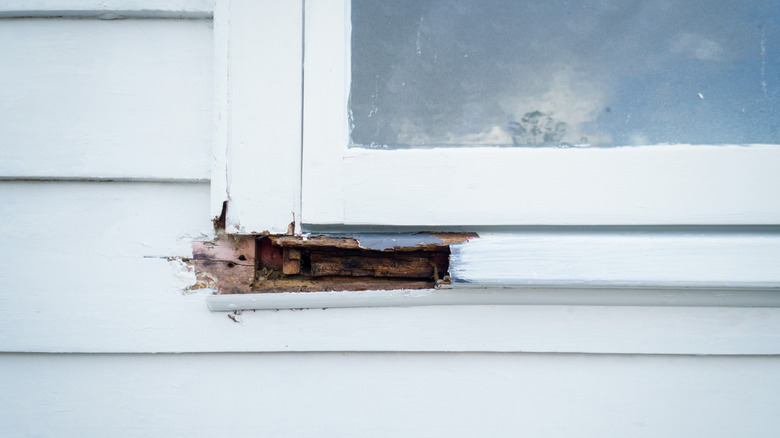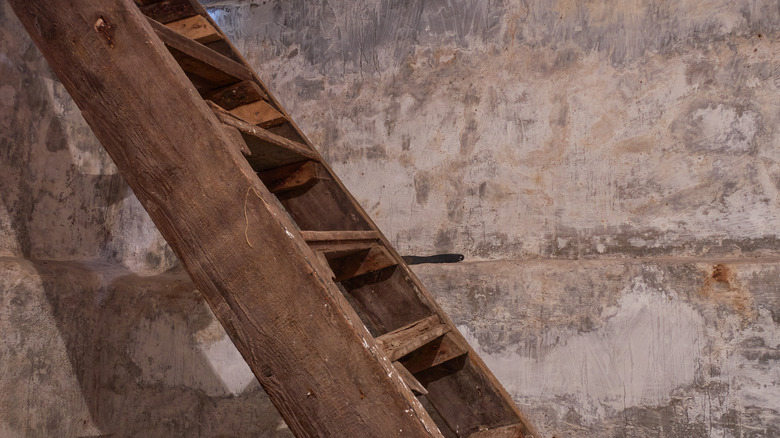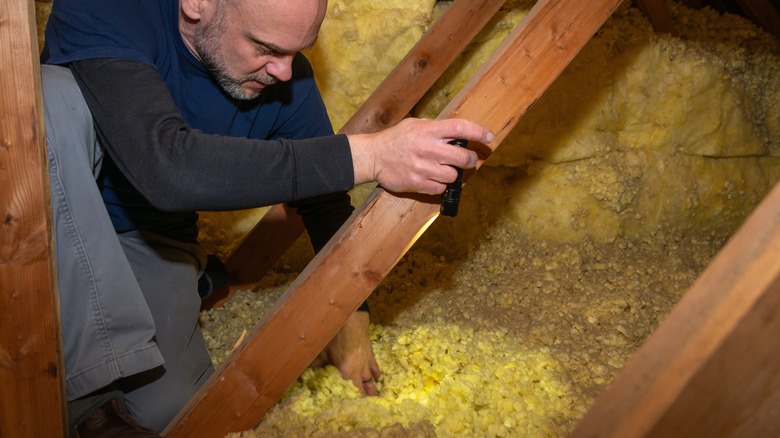How To Identify What Type Of Wood Rot You Have Before Repairing (And Why It Matters)
We may receive a commission on purchases made from links.
Wood is a beautiful and versatile material used in everything from framing houses to building furniture, but like every organic material, it is prone to damage, decay, and rot, which is part of the natural decomposition process. Natural or not, wood rot is unsightly and dangerous when it comes to construction, affecting the structural integrity of things made from wood — including your home.
If you're embarking on an exterior DIY project, make sure you choose the right wood for the job, specifically one that is naturally resistant to wood rot. Common places susceptible to rotting are outdoor decks, roofs, and basements, which regularly come in contact with the elements. If you have found wood you suspect is rotted, you must first ascertain which type of rot it is before embarking on repairs. By identifying the kind of wood rot afflicting your house, you can determine the rot's speed spread, which will help you decide the kind of repairs you should make and how soon you need to make them.
Types of wood rot
When confronted with wood rot, there are two main types to look for — dry rot and wet rot. Dry rot, which is also referred to as brown rot, has only one cause, a destructive fungus called Serpula lacrymans, making the source easy to identify. Dry rot poses a significant danger to the structural integrity of your house, as wood that has been dry rotted will be brittle and flaky, and crumble when touched. If you spot signs of Serpula lacrymans, deal with it immediately, since the rot is aggressive. A rust-colored dust is often the first indicator that Serpula lacrymans' spores have infected the wood in your home.
Wet rot, as you could guess by the name, can be found on damp wood and is common in humid areas like the Southeastern United States. Like dry rot, it is caused by fungus that eats away at the wood, leaving it soft and spongy. Look for wet rot in places that could collect moisture, such as basements, near plumbing, and around windows and doors. Wet rot, which includes common soft or white rot, can be an indication that something else is wrong in your home, signaling leaks or areas that might need better sealing. If the rot is allowed to fester, the fungi will spread and begin to produce fruiting bodies that resemble mushrooms. While mushrooms are an adorable décor trend, you probably don't want them growing straight out of your house.
How to find and address wood rot
The best way to test wood for rot is with a screwdriver or pick. Look for discolored wood and poke it with your tool. Decayed wood will be soft, so if the tool slides in easily, it indicates a problem. You can also use your pick or screwdriver to pry out a piece of wood. If it makes a crisp snapping noise and cracks on either side of the tool, the wood is healthy, but if it makes a dull noise and breaks directly above the tool, it may be rotted.
Once you've determined if the wood is rotted, the best course of action is to remove the damaged pieces and replace them. If the rot is not severe, you may be able to save the wood by coating it in a wood preservative or restorer like the Bondo Rotted Wood Restorer. To keep more rot from occurring, dry the area, make sure to fix any leaks, and cut down on moisture by dehumidifying the room. Prevention is easier than repair, so if you're planning on bringing your DIY deck plans to life, look for naturally resistant woods such as teak, oak, and cedar.


